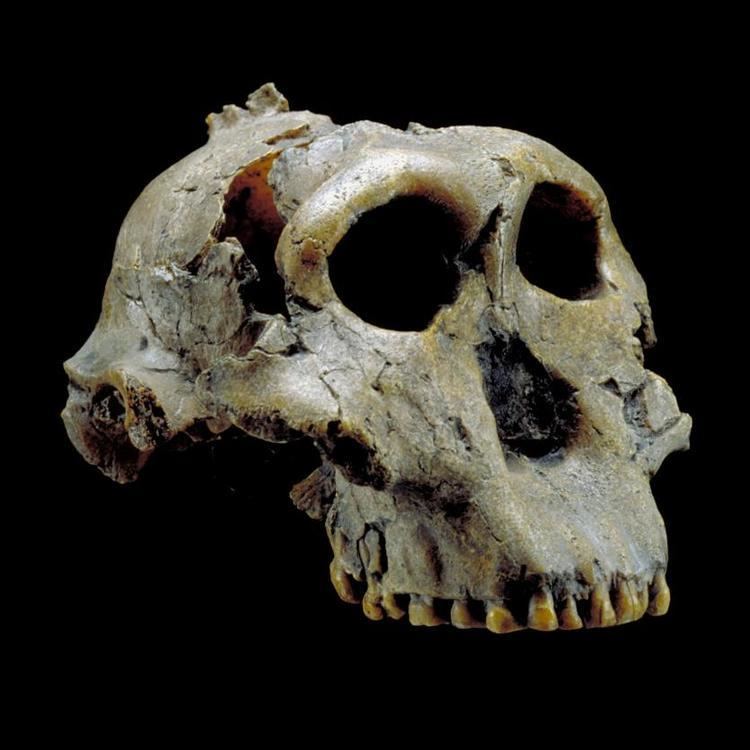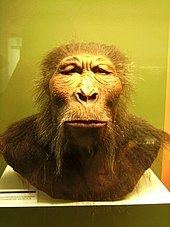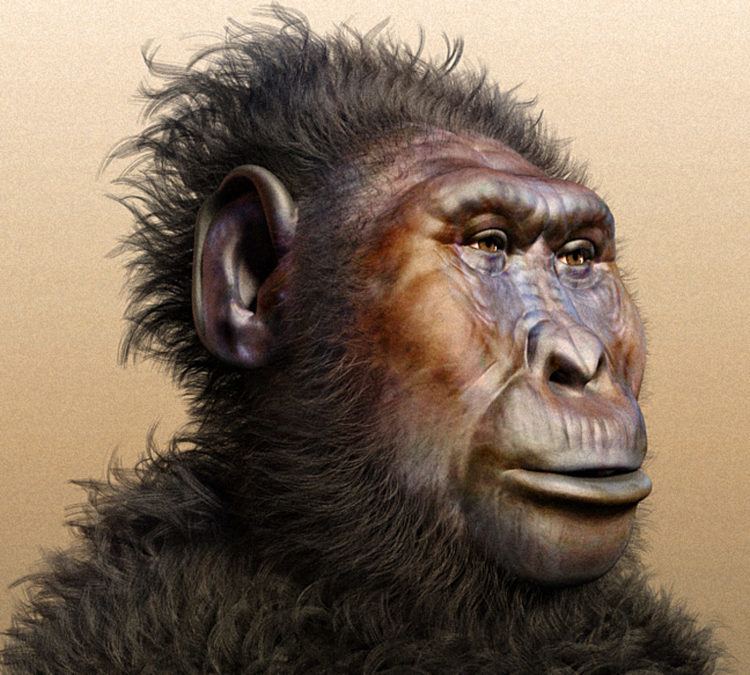Kingdom Animalia Order Primates Genus Paranthropus Rank Species | Phylum Chordata Family Hominidae Scientific name Paranthropus boisei Higher classification Paranthropus | |
 | ||
Similar Paranthropus, Paranthropus robustus, Australopithecus africanus, Paranthropus aethiopicus, Australopithecus afarensis | ||
Paranthropus boisei
Paranthropus boisei or Australopithecus boisei was an early hominin, described as the largest of the Paranthropus genus (robust australopithecines). It lived in Eastern Africa during the Pleistocene epoch from about 2.4 until about 1.4 million years ago.
Contents
- Paranthropus boisei
- Discovery
- Morphology and interpretations
- Fossils
- Other well preserved specimens
- Diet
- References

Discovery

First discovered by anthropologist Mary Leakey on July 17, 1959, at Olduvai Gorge, Tanzania, the well-preserved cranium (nicknamed "Nutcracker Man") was dated to 1.75 million years ago and had characteristics distinctive of the robust australopithecines. Mary and her husband Louis Leakey classified the find as Zinjanthropus boisei: "Zinj" for the medieval East African region of Zanj, "anthropus" (Gr. ανθρωπος, anthropos) for "human being", and "boisei" for Charles Watson Boise, the anthropologist team’s benefactor.

Paranthropus boisei (as the species was eventually categorized) proved to be a treasure, especially when the anthropologists' son Richard Leakey suggested it was the first hominin species to use stone tools. Bernard Wood of the University of Liverpool, England, posits that tools discovered in Ethiopia and dated to 2.5 million years ago could have been made by Paranthropus boisei. A well-preserved jaw, known as the Peninj Mandible, was found by Richard's colleague Kamoya Kimeu in 1964 in Peninj, Tanzania. Another skull, specimen KNM ER 406, was unearthed in 1969 by Richard at Koobi Fora near Lake Turkana, in Kenya.
Morphology and interpretations
The brain volume is quite small, about 500 to 550 cm³, not much larger than Australopithecus afarensis and Australopithecus africanus or modern-day chimpanzees. In P. boisei the foramen magnum is much shorter than in P. robustus. In, addition, the cranial variation of P. boisei is remarkably high. The adult males were larger on average than females (sexual dimorphism), as was the case in virtually all australopithecine species. Males weighed some 49 kg (108 lb) and stood about 1.37 m (4 ft 6 in) tall, while females weighed about 34 kg (75 lb) and were 1.24 m (4 ft 1 in) tall.
It had a skull highly specialized for heavy chewing and several traits seen in modern-day gorillas. The molar teeth were very large, with an area over twice that of modern humans. The species is sometimes referred to as “Nutcracker Man” because it had the biggest, flattest cheek teeth and the thickest enamel of any known hominin.P. boisei had large chewing muscles attached to a pronounced sagittal crest. To accommodate their enormous cheek teeth (four times the size of modern human teeth ), P. boisei had a wide face, although the front teeth were much smaller than in similar species.
Some argue that the craniodental morphology of this taxon (e.g. large postcanine dentition, thick enamel, robust mandibles, sagittal cresting, flaring zygomatic region) is indicative of a diet of hard or tough foods such as ground tubers, nuts and seeds. However, research on the molar microwear of P. boisei has found a pattern very different from that observed in P. robustus in South Africa, which is thought to have fed on hard foods as a fallback resource. This work suggests that hard foods were an infrequent part of P. boisei's diet. Carbon isotope ratios suggest P. boisei had a diet dominated by C4 vegetation, unlike P. robustus in South Africa.
Fossils
In 1993, A. Amzaye found fossils of P. boisei at Konso, Ethiopia. The partial skull is designated as KGA10-525 and is dated to 1.4 million years ago. It is the biggest skull specimen ever found of P. boisei. The oldest specimen of P. boisei was found in Omo, Ethiopia, and dates to 2.3 million years ago, classified as (L. 74a-21), while the youngest specimen from Olduvai Gorge dates to 1.2 million years ago and is classified as OH 3 and OH 38.
Other well-preserved specimens
Diet
Almost all primates and hominids are or were dietary generalists, meaning that they ate a wide variety of foods and did not depend on a single, specific food source.
The most widely accepted theory about what foods P. boisei ate suggests that it fed on hard objects as its primary source of nutrition. Strong jaw muscles are believed to be an evolutionary adaptation of P. boisei for a diet of nuts, seeds and hard fruit. Analysis of the wear on the molars of P. boisei showed fine striations indicating constant chewing of small, hard food items, like nuts and seeds.
The foods that P. boisei would have ingested can be determined by means of carbon isotope measurements (not to be confused with radiocarbon dating). Along with fruits and nuts, carbon isotope data on P. boisei fossils suggest that their diet was largely based on C4 resources, probably grasses or sedges. One study has concluded that the diet of P. boisei actually consisted mostly of grasses and sedges such as tigernut and that it rarely ate fruits and nuts. According to another, the addition of tubers to its diet helped P. boisei to meet its daily caloric intake requirement. In any case, it would appear that P. boisei consumed larger quantities of plant matter than any other hominin studied to date.
The diet of fruits and nuts that P. boisei would have eaten is reflected by its classification as a cosmopolitan species, meaning that its wide geographic range would result in a diverse diet of different foods. The data suggest that this C4 resource centered diet was present over a wide range of period and region, with Paranthropus in eastern Africa and southern Africa having different diets.
